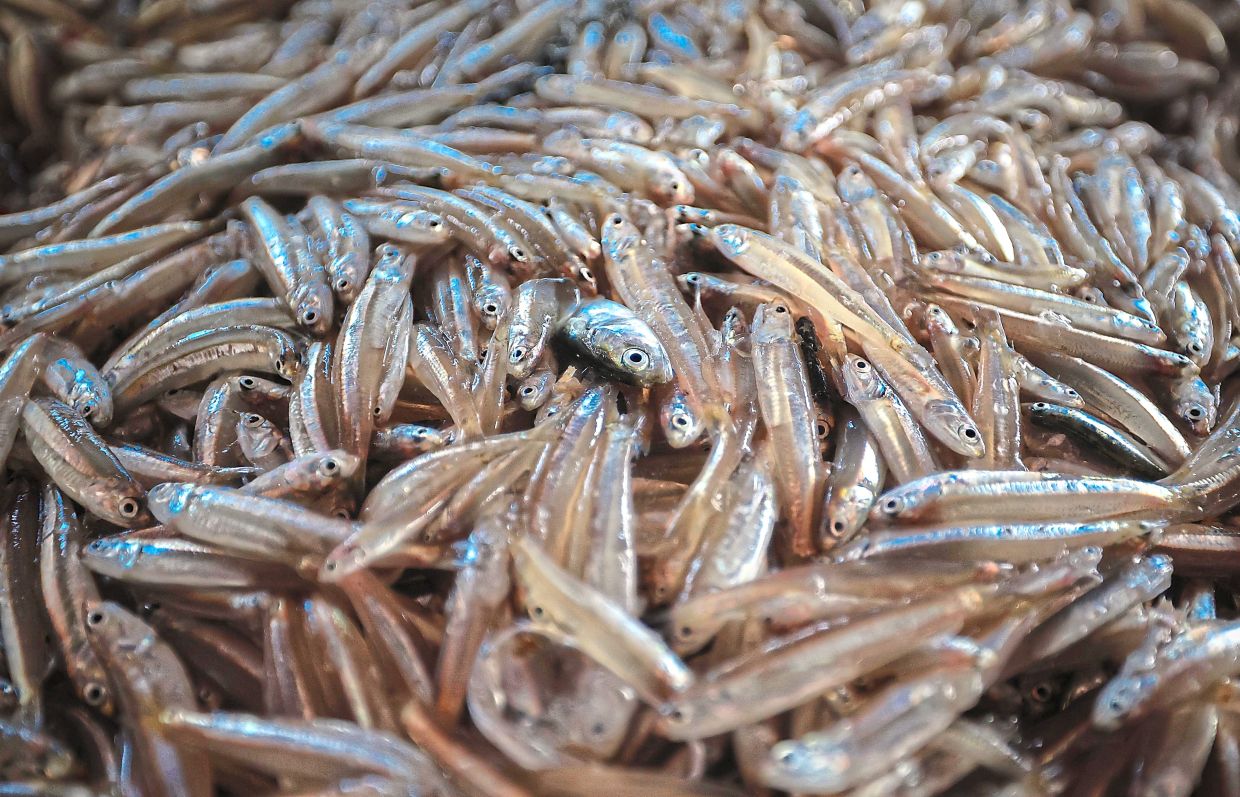Nature’s wonder: A fisherman drying out the blue-eyed ikan bilis before it is packed and sold. — Bernama
LUMUT: Known for its scenic beaches and fleet of pink taxis, Pulau Pangkor is also famous for its seafood, particularly blue-eyed anchovies, which are better known locally as ikan bilis mata biru.
For domestic visitors, a visit to the duty-free island would not be complete without bringing home some ikan bilis or other seafood produce.
Recently, on a fishing trip with fisherman and blue-eyed ikan bilis trader M. Muthu, 60, provided the opportunity to observe how the “treasure” of Pulau Pangkor is caught.
“The one centimetre-long blue-eyed ikan bilis gets its name from its blue eyes. Not all ikan bilis have blue eyes,” said Muthu, who was born and raised in Pulau Pangkor and has been an anchovy fisherman for over three decades.
He said one of the main advantages of blue-eyed anchovies compared to other types is that they do not need to be cleaned before cooking as they have no bones or guts, reported Bernama.
“We go out to sea every day from 5am to 8am and again from 2pm to around 8pm. If the weather is good, we’ll have a good catch to bring back.
“But we don’t go out if it rains heavily because the ikan bilis schools won’t surface,” he said.
Muthu added that before the adoption of modern technology, the island’s fishermen relied solely on their observation skills and experience to locate areas rich in anchovy.
Today, sonar technology is used to detect schools of anchovies, making it easier to pinpoint their locations.
“By using the sonar system, we not only save time but can also lower our nets seven or eight times in a single fishing session.”
On average, Muthu’s daily haul of anchovies of various sizes is between 400kg to 900kg.
“Once caught, we immediately boil them for about two minutes, after which the water is drained.
This process helps reduce their saltiness,” he said, adding as far as he knew, this boiling method is unique to Pangkor fishermen.
After returning to the jetty, the anchovies are dried for about 10 hours.
Once dried, the anchovies are graded according to their size using a special machine and then packed into 25kg packages before being sold to wholesalers and distributors at prices ranging from RM750 to RM2,000 per package, depending on the grade.
Ikan bilis trader Oh Teck Soon, 50, said the blue-eyed variety from Pulau Pangkor is highly sought after by tourists.
Oh explained that unlike standard anchovies, which deteriorate quickly when exposed to air, becoming brittle and dusty, Pulau Pangkor’s blue-eyed anchovies retain their freshness and quality even after storage.
“The only thing that changes is the colour, which may turn slightly yellowish depending on the temperature and weather. Its taste remains the same.”





